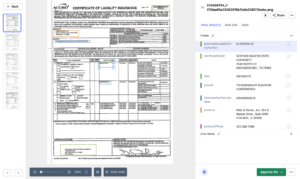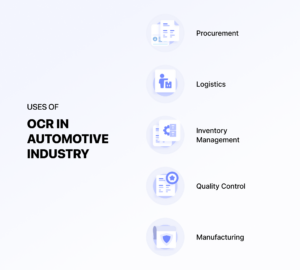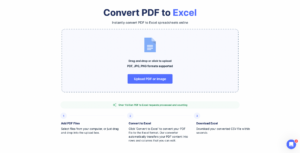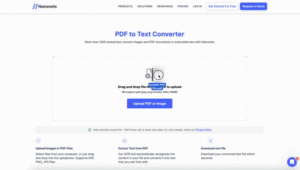
Today, businesses are run not only locally but with the help of global partners and suppliers. Technology has made it possible to run global businesses efficiently and effectively. However, with a global business comes the need to manage a global supply chain. A supply chain constitutes a complex ecosystem of partners and global suppliers, each of them adding value along the way as goods and services are delivered to the end consumer. However, managing a global supply chain can get complicated quickly. Hence it is crucial to have global supplier management processes in place to be able to effectively manage partners and suppliers across the globe.
What is global supply chain management?
Global supply chain management or supply chain automation involves the efficient distribution of goods and services, with the help of partners and suppliers across the world, so as to efficiently run a business while maximizing profits and yet keeping the product or service at a reasonable cost for the end consumer. Essentially, it entails conducting business on a global scale.
Global supply chain management largely focuses on operations, logistics automation, and supply chain management with the goal of the business staying competitive and being able to provide cost-effective products and services to its customers.
Why is global supplier management important?
Global supplier management is a systematic initiative aimed at overseeing suppliers and enhancing their influence on the buyer's operations. This involves overseeing vendor deliverables, engaging in collaborative efforts for the development of new processes, ensuring compliance, and handling invoice payments.
The primary objective of global supplier management is streamlining the supply chain to optimize the value derived from expenditures on suppliers, ensuring that a business obtains the utmost benefit from its supplier relationships. Effectively managing suppliers is a vital component of any business strategy, encompassing the identification, selection, and meticulous oversight of suitable suppliers, along with a comprehensive evaluation of their performance to guarantee the delivery of optimal value to the business.
Efficient supplier management enables an enterprise to aim for the highest possible value for its business needs, providing a competitive edge. This approach can lead to cost savings by enhancing the quality of procured services and goods, ultimately influencing the bottom line positively.
Automate the invoicing process using Nanonet's AI-based OCR software. Capture data from documents instantly. Reduce turnaround times and eliminate manual effort.
Benefits of global supplier management
Some of the major benefits of having global supplier management processes are:
- Increased flexibility in the business's supply chain ensures that the organization is able to adopt new technologies and react to changes in the business landscape quickly.
- Reduced risk in the global supply chain by eliminating supplier errors, increasing visibility across the entire chain, and having efficient vendor invoice management.
- Achieve cost reduction in running a supply chain by efficiently managing and improving collaboration between global suppliers.
Best practices for managing global suppliers
- Know your suppliers: Get to know the suppliers that you are planning to work with personally. Visit the supplier's facilities to check on their ability to serve requirements and asses risks that might come with them.
- Set minimum standards: Maintaining quality while working with global suppliers is extremely important, hence the need to set a minimum standard for each product or service which can be quickly assessed by the quality assurance team.
- Look at experience, not just certifications: A supplier having a certification is good but it should not be the only check made before getting into business with them. Physical visits and the experience of the supplier should also be scrutinized before finalizing the supplier.
- Build relationships: Get your sourcing team to build real human relationships with the suppliers. It not only helps in keeping the supply chain running smoothly but also suppliers will be more receptive to helping in case of sudden requirement changes due to business growth or changing landscapes.
- Use Global Food Safety Initiative (GFSI): Leverage GFSI extensively and establish contracts and import protocol agreements. When onboarding a new supplier facility, ensure they sign an import agreement in addition to the standard contracts. This agreement not only records crucial information but also communicates the procedures you have implemented to verify the compliance of products.
Best practices for specific global products
- Keep product specifications up to date: Create comprehensive product specifications and ensure they are always up to date. This is very important since if this is not available you might end up with general industry standard products that might not work with your requirements.
- Conduct regular audits: Regularly audit the products and production records to ensure product specifications are being met. These can be conducted internally or can engage third-party auditors to ensure compliance.
- Ensure label compliance: In some cases, there are regulations that stop labels from other regions being displayed in their region. In these instances, it is important to have processes and teams looking at this and working with local suppliers to ensure label compliance.
- Enforce quality assurance standards: Always be on the lookout for any red flags that might come up for vendors. Some things that should constantly be monitored include; ethical sourcing, underage labor, environmental impacts, and sustainability.
Eliminate bottlenecks created when managing invoices from vendors across the globe. Find out how Nanonets can help your business automate vendor invoice management.
- SEO Powered Content & PR Distribution. Get Amplified Today.
- PlatoData.Network Vertical Generative Ai. Empower Yourself. Access Here.
- PlatoAiStream. Web3 Intelligence. Knowledge Amplified. Access Here.
- PlatoESG. Carbon, CleanTech, Energy, Environment, Solar, Waste Management. Access Here.
- PlatoHealth. Biotech and Clinical Trials Intelligence. Access Here.
- Source: https://nanonets.com/blog/global-supplier-management/
- :has
- :is
- :not
- $UP
- a
- ability
- Able
- across
- adding
- addition
- adopt
- Agreement
- agreements
- aim
- aimed
- along
- also
- always
- an
- and
- any
- approach
- ARE
- AS
- assessed
- assurance
- At
- audit
- auditors
- automate
- available
- BE
- before
- being
- benefit
- benefits
- between
- bottlenecks
- Bottom
- build
- business
- business strategy
- businesses
- but
- BUYER..
- by
- CAN
- Can Get
- capture
- case
- cases
- Certification
- chain
- Changes
- changing
- check
- collaboration
- collaborative
- come
- comes
- competitive
- complete
- complex
- compliance
- complicated
- component
- comprehensive
- conducted
- conducting
- constantly
- consumer
- contracts
- Cost
- cost reduction
- cost savings
- cost-effective
- create
- created
- crucial
- Customers
- data
- Date
- delivered
- delivery
- Derived
- Development
- displayed
- distribution
- documents
- due
- each
- ecosystem
- Edge
- effectively
- efficient
- efficiently
- effort
- efforts
- eliminate
- eliminating
- enables
- encompassing
- end
- engage
- engaging
- enhancing
- ensure
- ensures
- ensuring
- Enterprise
- Entire
- environmental
- Errors
- essentially
- establish
- Ether (ETH)
- ethical
- evaluation
- experience
- extensively
- extremely
- facilities
- Facility
- Find
- flags
- Flexibility
- focuses
- food
- For
- from
- General
- get
- getting
- Global
- global business
- global scale
- globe
- goal
- good
- goods
- Growth
- guarantee
- guide
- Handling
- Have
- having
- help
- helping
- helps
- hence
- highest
- How
- However
- HTTPS
- human
- Identification
- if
- Impacts
- implemented
- import
- important
- improving
- in
- include
- increasing
- industry
- influence
- influencing
- information
- Initiative
- instances
- instantly
- internally
- into
- invoice
- Invoice Management
- invoices
- invoicing
- involves
- IT
- ITS
- just
- keeping
- Know
- Label
- Labels
- labor
- landscape
- largely
- lead
- Leverage
- Line
- local
- locally
- looking
- made
- maintaining
- major
- manage
- management
- managing
- manual
- maximizing
- met
- meticulous
- might
- minimum
- monitored
- more
- Need
- needs
- New
- New technologies
- objective
- obtains
- OCR
- OCR Software
- of
- on
- Onboarding
- only
- Operations
- optimal
- Optimize
- or
- organization
- Other
- out
- overseeing
- Oversight
- partners
- performance
- Personally
- physical
- Place
- planning
- plato
- Plato Data Intelligence
- PlatoData
- possible
- practices
- primary
- procedures
- process
- processes
- Product
- Production
- Products
- Products and Services
- profits
- protocol
- provide
- providing
- quality
- quickly
- React
- real
- reasonable
- records
- Red
- Red Flags
- reduce
- reduction
- region
- regions
- regular
- regularly
- regulations
- Relationships
- requirement
- Requirements
- Risk
- risks
- Run
- running
- s
- Safety
- Savings
- Scale
- selection
- serve
- service
- Services
- set
- should
- sign
- since
- smoothly
- So
- Software
- some
- Sourcing
- specific
- specifications
- standard
- staying
- Stop
- Strategy
- sudden
- suitable
- supplier
- suppliers
- supply
- supply chain
- supply chain management
- Sustainability
- team
- teams
- Technologies
- Technology
- that
- The
- the world
- their
- Them
- There.
- These
- they
- things
- third-party
- this
- times
- to
- Ultimately
- Unsplash
- using
- utmost
- value
- vendor
- vendors
- verify
- very
- visibility
- Visit
- Visits
- vital
- Way..
- when
- which
- while
- will
- with
- Work
- working
- world
- yet
- you
- Your
- zephyrnet












